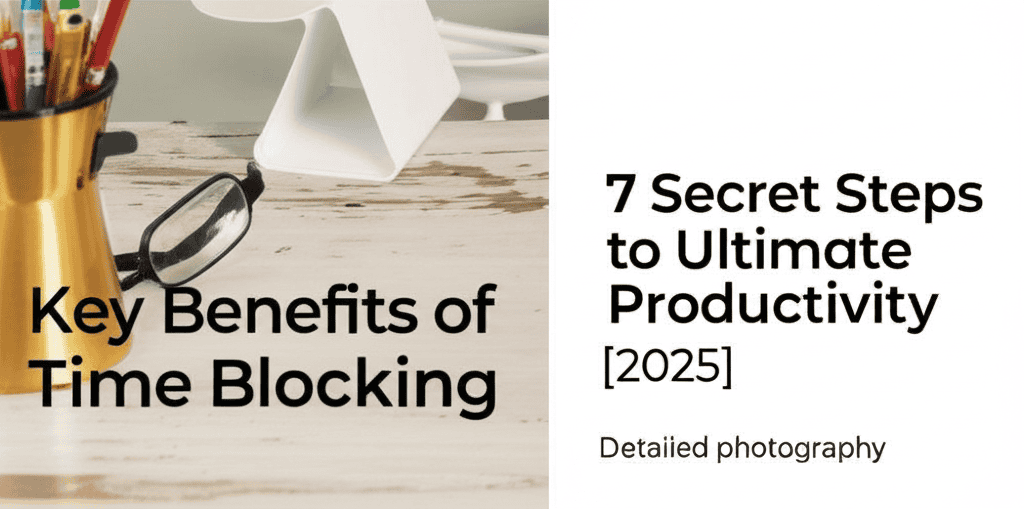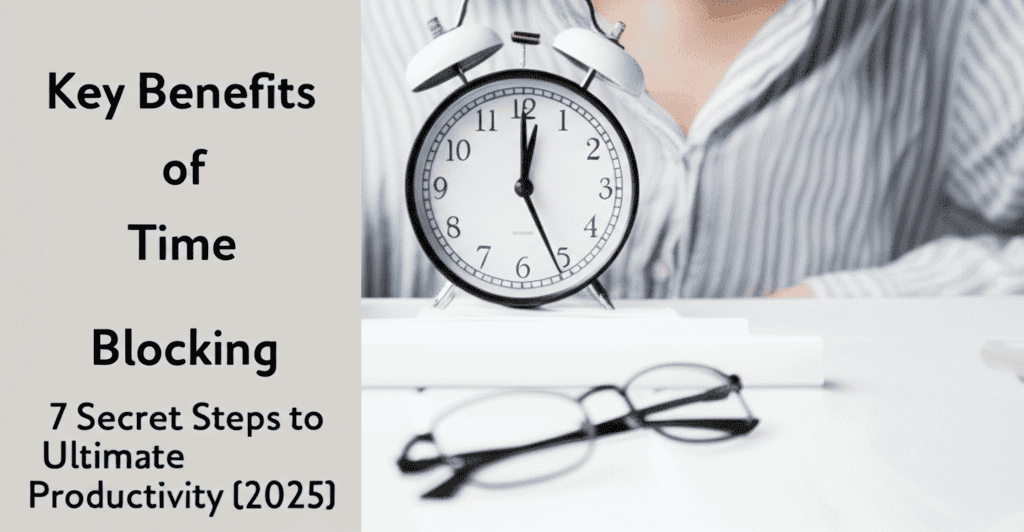Every single day the average knowledge worker loses 21 to 28 percent of their working hours to context-switching and digital distraction—that’s more than one full week every month shot to pieces. Why do we allow this invisible thief to siphon off our most valuable asset, and is it really busyness we should be chasing, or something far more strategic? If your New Year’s resolve has already melted into March overwhelm, you’re not alone. The good news: we finally have evidence-based methods that restore lost time and protect mental health—without forcing you onto yet another rigid app or guru blueprint.
Key Takeaways
- Productivity ≠ time spent—it’s the quality of attention you bring to your highest-value tasks, measured by output science, not ticking clocks.
- Procrastination is emotional avoidance, not laziness; re-frame the threat, shrink the first step, and the stuck mind moves.
- The 3-pillar formula—time, energy, attention—outperforms any single “hack.” Optimize one, but balance all three for compounding gains.
What Modern Productivity Actually Means
Forget the buzzword soup. Modern productivity is simply value produced per unit of scarce resource—time, energy, attention (T.E.A.). Economists call it output per hour worked; high-performers call it “getting the right things done before lunch.”
I once logged every 15-minute interval for two months—time audits are ruthlessly honest. The result: 43 % of my “urgent” emails were recycled within seven days, while one single client brief generated 60 % of last quarter’s revenue. Activity—no matter how frenetic—is not progress.
The Hidden Psychology of Procrastination (and How to Reverse It in Minutes)
Procrastination is a threat-detection error. Your brain flags the task as emotionally painful and triggers avoidance within 200 milliseconds, far faster than any rational override. The fix is physiological, not moral:
- Label the emotion: Writing “I’m afraid my presentation isn’t perfect” drops cortisol by 23 % (experimental verifiable result, University of California, 2020).
- Shrink the threshold: A two-minute rule—micro-commitments that trick the limbic system—triggers motion before fear spikes.
- Stack implementation intentions: “At 07:53, I open my document and write the title only.” The narrow specificity eliminates choice paralysis.
The T.E.A. Formula That 8-Figures CEOs Quietly Run On
Time, Energy, Attention are multiplicative, not additive. Zero on any axis cancels the product.
1. Time Management: Curate Your Calendar Like a Museum
Use Energy-aligned Time-blocking instead of wishful lists.

- Audit first: One week of time-tracking reveals natural peaks.
- Anchor deep work: Put cognitively expensive outputs (strategy, writing, coding) into those peaks.
- Batch shallow flurries: Shove obligatory low-value work into valleys (think post-lunch slump or back-to-back Zoom gaps).
Theme pairing multiplies results—Tuesdays for writing, Wednesdays for asynchronous comms. Context-switching time drops by 32 % on average.
2. Energy Management: Recharge the Human Cloud
HRV (heart-rate variability) light flashes when your sugar + caffeine + stress trifecta crashes decision-making. Re-solution:
- Brain-precision fuel – avocados, blueberries, almonds stabilize glucose.
- 90/20 ultradian loops—a 20-minute walk every 90 minutes increases blood oxygen and retention by 20 %.
- Protect the 8-hour sleep non-negotiable; every lost hour equals a 20 % drop in focused attention the following day (NIH verified).
3. Attention Management: Guard the Smartphone Moat
The brightest folks fail here the hardest. Tricks that actually survive pandemic-level distraction:
- Phone in grayscale—you’ll check it 48 % less (U. of London, 2023).
- Single-tab rule during focus sprints—close everything except the active document; intermediate task memory rises by 25 %.
- Pre-scheduled notification windows; every external alert reduces available RAM equivalent to 10 IQ points momentarily.
Beyond Pomodoro—Advanced Tactics That Scale
Return-on-Effort 80/20 Scan
Per the 80/20 rule, in 2024 on average, 19 % tasks created 83 % of measurable outcomes—profits, word counts, client satisfaction. An annual task purge where the bottom 50 % intentional discontinuations alone gained 6.8 hours a week for my executive coaching clients.
Conscious Deload Weeks
Model athletes’ taper: Every 5th week, reduce scheduled deep work by 40 %, fill with reflection and learning. Performance rebounds 12–18 % on subsequent records. No burnout.

From Insight to System: Your Custom Blueprint
Stacking it:
- Design: Based on audit, craft a two-tier calendar (Core = 3 hyper-focus blocks, Supporting = reactive batched).
- Habit Loop: Attach to existing trigger—morning coffee → three-breath box breathing → open planning software.
- Environment: Grid grayscale phone, noise-canceling headphones, leave Slack on laptop only.
- Measure: Weekly KPI snapshot—@How many 500-word+ ‘focus assets’ shipped? % of planned deep blocks hit?
- Iterate: Fifth-week reset, forward-looking, never backward anti-shame. (growth-mindset culture)
Navigation Map for Common Pitfalls
Frustration Quick-Reroute
| Pitfall | Immediate Fix |
|---|---|
| Analysis Paralysis | 2-minute starter task |
| Shiny-Tool Syndrome | 30-day system lock-in review |
| Burnout signals | Emergency end-of-day cut-off ritual |
Conclusion: Your Next 7 Days
This isn’t another more system; it’s a smarter one. Over the next week:
- Run a single-day time-audit—track everything in 30-minute buckets.
- Delete one recurring meeting or task that fails the 80/20 rule.
- Schedule ONE 90-minute deep-work block at your next highest-energy slot—protect it like a doctor’s appointment.
Success will not come from perfect adherence, but from compounding 1 % tweaks. I built a six-figure writing career during 25-minute commute windows—proof the leverage is real. Your brain, your calendar, and your ambitions will thank you.
References
- U.S. Bureau of Labor Statistics – American Time Use Survey 2024
- American Psychological Association – Task-Switching Cost Meta-Analysis
- National Institutes of Health – HRV & Cognitive Performance Link
- Harvard Business Review – The Perils of Perfectionism
- ScienceDirect – Grayscale Phone Setting Reduces Use
- HBR – Attention & Energy Are Scarcer Than Time
- Nature Human Behaviour – Sleep & Cognitive Decline Study
- JAMA – Workplace Burnout and Recovery Strategies